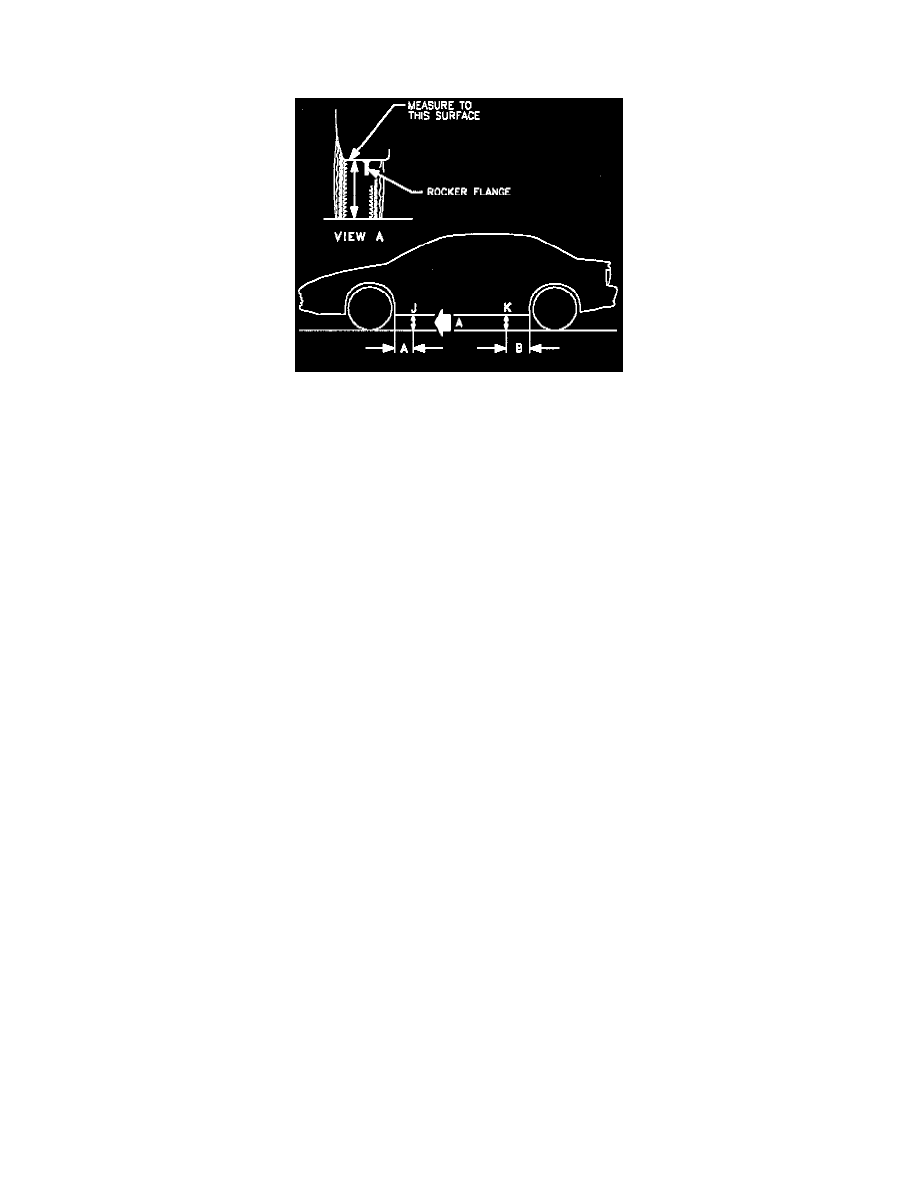SL L4-1.9L SOHC VIN 8 (1997)

Alignment: Service and Repair
Ride/Trim Height Measurement and Adjustment
IMPORTANT: When measuring alignment angles, it is critical that the vehicle curb trim height be correct. Measure and adjust trim height according to
the following procedure before performing alignment.
1. Place vehicle on a level surface.
2. Adjust tire pressures to correct specifications.
Curb trim height should be measured with:
a. 207 kPa (30 psi) tire pressure-front tires
b. 179 kpa (26 psi) tire pressure-rear tires
3. If vehicle fuel tank is not full, the following chart may be used to determine amount of weight necessary to be added to the trunk of vehicle to
simulate a full fuel tank.
Fuel Level Weight to Add
1/8 - 31.8 kg (70 lbs.)
1/4 - 27.2 kg (60 lbs.)
3/8 - 22.7 kg (50 lbs.)
1/2 - 18.1 kg (40 lbs.)
5/8 - 13.6 kg (30 lbs.)
3/4 - 9 kg (20 lbs.)
7/8 - 4.5 kg (10 lbs.)
4. Bounce front and rear suspensions a few times to settle suspension.
5. Measure front and rear vehicle curb trim height.
Measure from the front (A) or the rear (B) of the rocker flange to locate the curb trim height measuring points J and K
A: 117 mm (4.6 in.)
B: 105 mm (4.1 in.)
Measure the curb trim height from the level surface the vehicle rests on to the bottom horizontal surface of the rocker panel. Do not measure from
the rocker/jacking flange.
Curb Trim Height:
J (Front Rocker Height Range): 201 to 233 mm (7.8 to 9.0 in.)
K (Rear Rocker Height Range): 202 to 234 mm (8.0 to 9.3 in.)
